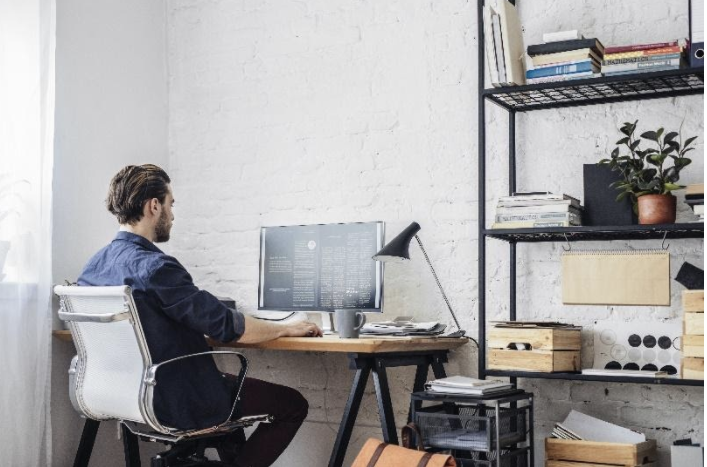How to Transition Effectively to Working From Home
So, we are all probably sick of hearing about Coronavirus, or COVID-19. There are two possible reasons why you may still want to read about it further: for more information on the illness so you can understand it better, or alternatively, how to minimise the risk of the virus or self-isolation to yourselves and your family.
We are targeting the latter, mainly because keeping your body healthy is what we osteopaths, physiotherapists and sports therapists do, but also to keep everyone as comfortable as possible and able to manage the arduous task of completely quarantining your household.
The purpose of the toolkit
The idea behind the toolkit is to provide a framework to transition effectively to working from home, then back again to the office chair. All this is about health, and of course, mitigating the risk of COVID-19 should be everyone’s priority, but you still have bodies that require movement and that get uncomfortable if you’re not moving or are moving in an inappropriate manner.
So, why is this important? Most of us discussing healthcare have been almost exclusively been talking about the virus and how to boost the immune system.
While this is a smart idea, the vast majority of us either won’t get symptoms or will experience mild to moderate symptoms, including high temperature and continuous cough.
Essentially, focusing our attention on other areas of our healthcare instead of only thinking about our immune system is important. A lot of people are faced with the inevitability of dealing with pain or discomfort while working from home or when they return to work and sport once the Coronavirus lockdown is over, and could use support throughout the transition.
The toolkit will be published over a 6 week period and covers all the things you need to know about how to adjust your workstation.
The 6-week series comprises:
- 1: Purpose of the toolkit and how to transition effectively to working from home
- 2: Lower limb injuries (avoiding lower back, hip, knee and heel issues while working from home)
- 3: Upper limb injuries (avoiding upper back, neck, shoulder and elbow issues while working from home)
- 4: Posture at home (avoiding bad posture habits while working from home)
- 5: Return to sport (how to safely return to full gym and sports training after a period at home)
- 6: Return to work (how to safely return to the work chair and desk after a period at home)
Transitioning from work to home

Now, this is the easy part because you are going from the office chair to the couch (in most cases). This is something everyone may get away with at the start of the isolation. We have compiled a list of good practices in order to stay healthy (both physically and mentally) during this transition:
Build your workstation properly
Try and make your workstation as similar to your office workstation as possible. This will help not only from a psychological aspect, but from a physical one also, as the body may struggle to adapt if your body is twisted more, you are slouching in the seat, or your elbows are much lower, relative to your hands.
Act as though you are in the office
Again, this will help with productivity, but it will also ensure that you take regular short breaks.
Choose to work when you feel more productive
One major advantage of working from home for most people is that you can more or less choose your hours. This can also be useful for when you find yourself developing back or neck pain,. You should be able to take a break to move and exercise the area. It could also be suggested that when you’re feeling lazy or tired you will start to slouch, so working during hours when you feel more energised should help.
Try and incorporate household chores to break up the day
This may seem contradictory to the ‘’act like you’re in the office’’. The integration of household chores into your day will keep you moving during your regular breaks. This will make you more productive and allows your body to get the functional movement it requires throughout the day.
Act on feedback from others
Hopefully, you’ll be in a position where you have other people at home with you. This is great to help keep you occupied but also to help act as a reminder for when you’re slouching. Posture is like the feeling of your socks – you’re only aware of it when you focus on it. This isn’t an opportunity for your friend or partner to criticise unnecessarily however! It is a chance to utilise a pair of eyes that will recognise your slouching and feel they are in a position to comment, which will help over the long term.
Conclusion
The virus is something to be cautious of, but this shouldn’t stop you from taking care of your musculoskeletal health. Once this is all over, you will be relying on your muscles, tendons and ligaments again and the better condition we keep them in, the easier the transition will be when we head back to the office.
This blog is designed to inform the reader on how to best transition effectively to working from home. We also aim to flag up any potential causes of musculoskeletal pain or discomfort that you may encounter.
We will also be providing information relevant to staying pain-free at home on social media. If you have any questions, send us a message and we’ll be happy to help you out. If there is something we suggest that you may take more time over, we will mention our online consultations to appropriately assess, inform and guide you out of your pain or discomfort.
For any further questions, please don’t hesitate to ask:
0161 209 2980
info@movementandwellbeingclinic.co.uk
Ed Madeley M.Ost